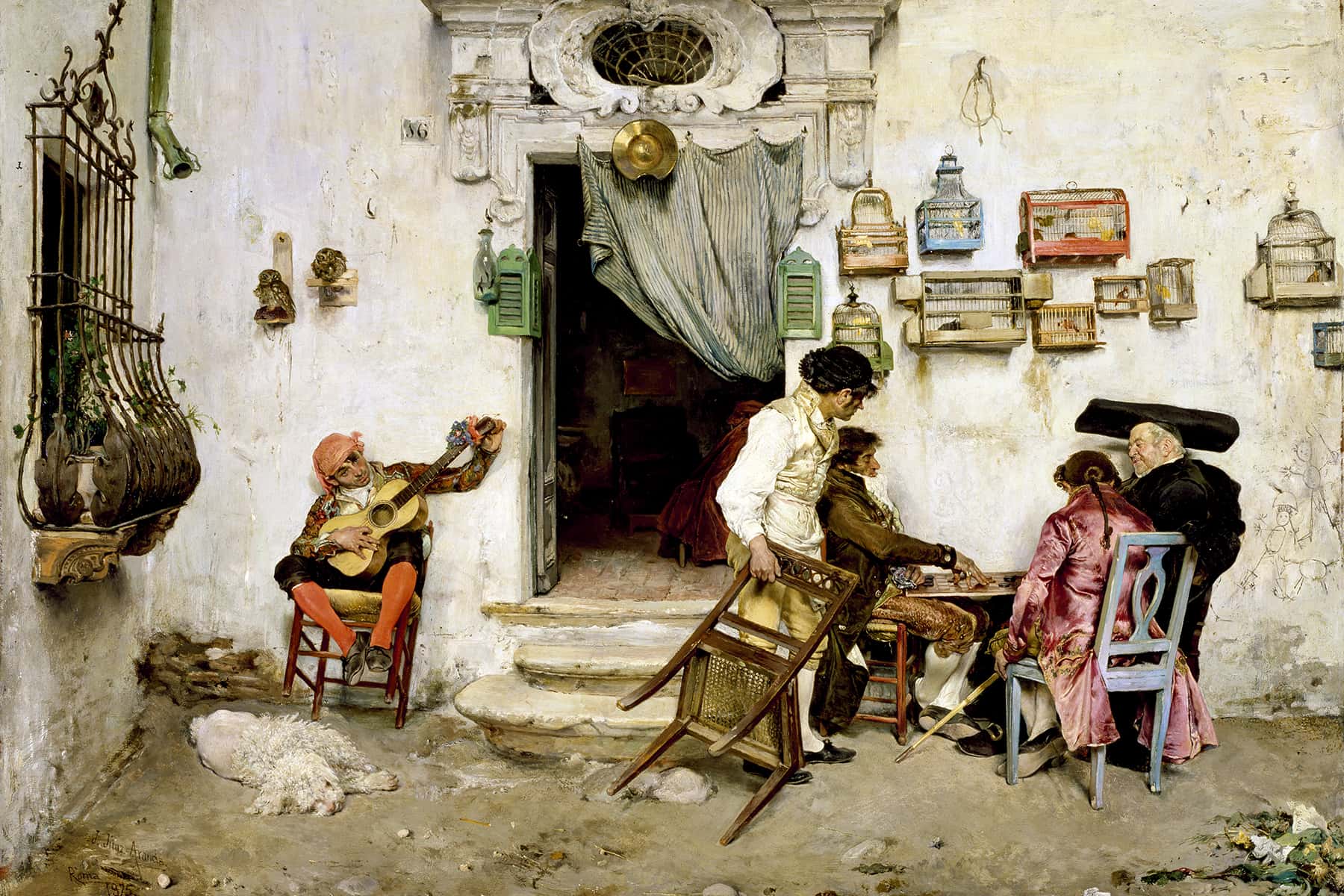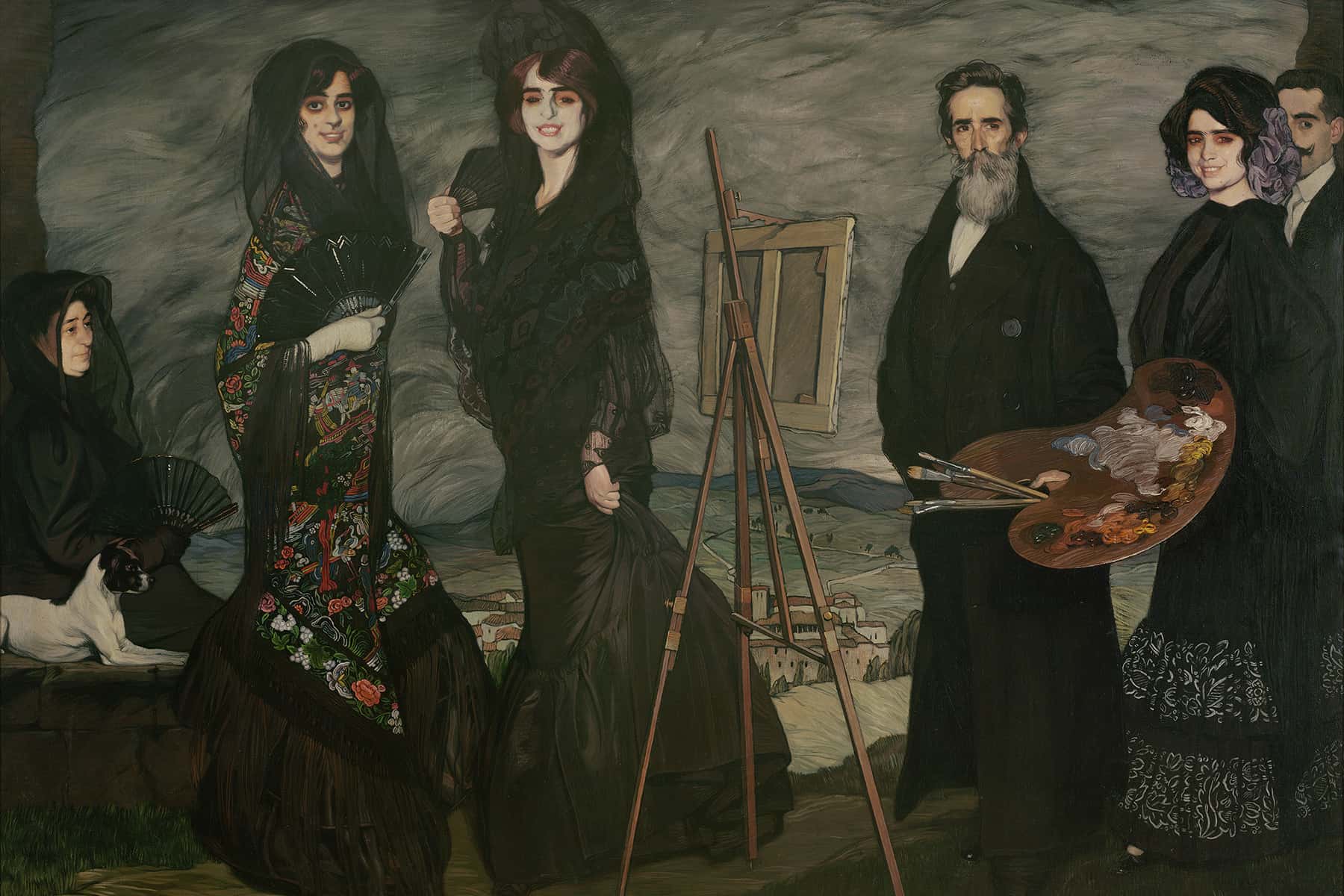
The extensive impact of Spanish art and culture on American painters in the nineteenth and early twentieth centuries will be the focus of “Americans in Spain: Painting and Travel, 1820–1920,” a new exhibition opening June 11 at the Milwaukee Art Museum.
The exhibition, which the Museum co-organized with the Chrysler Museum of Art, in Norfolk, Virginia, highlights prominent American artists such as Mary Cassatt, William Merritt Chase, Robert Henri and John Singer Sargent, who traveled to Spain for training and to study the old masters at the Prado Museum in Madrid.
More than 100 paintings, photographs and prints will be presented chronologically and organized to emphasize migration, tourism and travel in nineteenth-century Spain. Additional themes include the romance and the reality of old Spain; Spanish architecture, gardens and landscapes; Spain’s Nasrid and Islamic history; and the collecting and display of Spanish art in the United States. The exhibition also features a mobile app with audio descriptions in English and Spanish for several of the works.
“It’s difficult to overstate the importance that Spanish culture had on artists from the United States at the time, and we’re delighted to share this significant moment and its art with a wider public,” said Brandon Ruud, Abert Family Curator of American Art, Milwaukee Art Museum. “Travel and tourism played such an integral role in shaping the lives and work of some of the nation’s most famous painters. The exhibition and the accompanying interactive Artist-Travelers Project website and app make it uniquely possible for people to visit sites throughout Spain while exploring the art in the Museum or from the comfort of their own homes.”
Beginning in the nineteenth century, Spain attracted an increasing number of European artists, who were drawn to the country largely through stories of dramatic exploits reinforced by romantic cultural associations of the Victorian era. American painters also sought to capture the country’s scenic charms and seemingly exotic customs firsthand, but not until the outbreak of the Civil War did they begin traveling in earnest to Spain.
“International travel and exchange have always been central to the history of American art,” said Corey Piper, Brock Curator of American Art, Chrysler Museum of Art. “At a time when tourism and movement have been disrupted throughout the world, this exhibition explores a vibrant and significant moment in American painting, spurred by artists who traveled back and forth between Spain and the United States.
On view through October 3, “Americans in Spain” features artists and movements that expand upon areas of particular strength in the Milwaukee Art Museum’s collection, especially artists of the Ashcan Circle and the Eight, as well as in the Chrysler Museum of Art’s holdings of American and old master works. Among the highlights are John Singer Sargent’s famous Carmencita (1890), on loan from the Musée d’Orsay; a newly discovered painting by Mary Cassatt from a private collection in Madrid that has never before shown in the United States; and Spanish old masters on loan from the Prado Museum that were frequently copied by American painters.
American and European artists borrowed from Spanish prototypes, adapting flamenco dancers, matadors and other colorful characters for their own dramatic canvases. Landscape painters introduced the country’s medieval architecture and romantic gardens to American audiences. Women artists, in particular, found Spain more accommodating than other European countries to which they traveled. Mary Cassatt visited the country by herself – a rarity for a woman at the time – and had a studio for several months in one of Seville’s most historically significant buildings.
“The story of this often overlooked aspect of art history is one we were in a good position to tell,” said Marcelle Polednik, Ph.D., Donna and Donald Baumgartner director at the Milwaukee Art Museum. “Milwaukee has a long history of presenting the art of Spain, and Marquette University and the American Geographical Society Library at the University of Wisconsin–Milwaukee are rich with related resources and programs. Having the Chrysler Museum join us as a partner has been invaluable in strengthening the project.”
Presenting “Americans in Spain: Painting and Travel, 1820–1920” in the era of the COVID-19 pandemic offers a unique opportunity to consider the role that travel and cultural exchange play in the lives of artists and society at large. As current international travel has been dramatically curtailed by health concerns, visitors to the Milwaukee Art Museum will have a chance to learn how travel within Spain was essential to the development of American artists’ techniques and helped shape a pivotal period in the history of American art.
© Art
- José Jiménez Aranda, Figaro’s Shop, 1875. Oiloncanvas.175/16×225/8in.(44×57.4cm) Walters Art Museum, acquired by Williams T. Walters, before 1878
- Ignacio Zuloaga y Zabaleta, My Uncle Daniel and his Family, 1910. Oil on canvas. 80 3/4 x 114 in. (205.1 x 289.5 cm) Museum of Fine Arts, Boston, Caroline Louisa Williams French Fund















